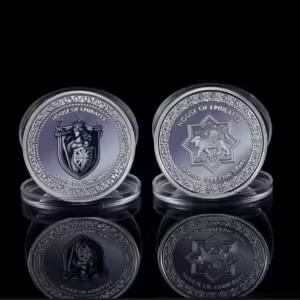By: Ahmad Saed Alzein, CEO of House of Emirates® hoemirates.com
Syria’s Roman history is a tale of resilience, cultural fusion, and imperial ambition, epitomized by the ancient city of Palmyra and its most famous son, Emperor Philip the Arab. Nestled in the heart of the Syrian desert, Palmyra served as a vital nexus of trade and civilization, connecting the Mediterranean world with the riches of the East.
Palmyra’s origins can be traced back to the 2nd millennium BC, but it was during the Roman period, particularly the 1st and 2nd centuries CE, that the city flourished. Its strategic location along the Silk Road and other caravan routes facilitated the exchange of goods, ideas, and cultures between the Roman Empire, Parthia, and beyond. Palmyra became a melting pot of civilizations, blending Graeco-Roman, Persian, and Arab influences into a unique and vibrant tapestry of urban life.
Emperor Philip the Arab, born in the Syrian city of Shahba around 204 CE, ascended to the imperial throne in 244 CE. His reign marked a pivotal moment in both Roman and Syrian history. As the first emperor of Arab descent, Philip’s rule symbolized the integration of the eastern provinces into the fabric of the Roman Empire. His background endowed him with a deep understanding of the region’s complexities and a desire to bridge the gap between East and West.
Philip’s connection to Palmyra was not merely incidental; it was foundational to his identity and political strategy. The city, with its wealthy merchant class and strategic location, played a crucial role in Philip’s rise to power. As emperor, he lavished attention and resources on Palmyra, granting it special privileges and autonomy within the empire. Under Philip’s patronage, Palmyra blossomed into a cosmopolitan center of trade, culture, and learning, rivaling even the great cities of Rome and Alexandria.
One of Philip’s most enduring legacies was his support for the city’s religious institutions, particularly the cult of Bel, the chief deity of Palmyra. The emperor, like many of his predecessors, recognized the importance of religious patronage as a means of fostering loyalty and stability in the empire. He contributed generously to the upkeep of temples, sponsored religious festivals, and even minted coins featuring the image of Bel. This support solidified Philip’s standing among the Palmyrenes, who revered him as a benefactor and divine protector.
However, Philip’s reign was not without its challenges. The Roman Empire was beset by external threats, internal strife, and economic instability. In the East, the Sassanian Persians posed a formidable adversary, launching incursions into Roman territory and challenging the empire’s hegemony. Philip’s attempts to negotiate a peaceful resolution to these conflicts met with mixed success, and tensions continued to simmer along the eastern frontier.
Amidst these geopolitical upheavals, Palmyra emerged as a bastion of stability and prosperity. Queen Zenobia, Philip’s wife and regent for their young son, Vaballathus, assumed control of the city and its surrounding territories. A formidable leader in her own right, Zenobia expanded Palmyrene influence through a combination of military conquest and diplomatic maneuvering. Under her rule, Palmyra evolved from a provincial backwater into a regional power, challenging Roman authority and asserting its independence.
Zenobia’s ambitions culminated in the establishment of the Palmyrene Empire, a rival state to Rome encompassing territories from Egypt to Asia Minor. She styled herself as Augusta, adopting the trappings of imperial power and presenting herself as a legitimate successor to the Roman emperors. Zenobia’s court became a center of culture and learning, attracting scholars, poets, and philosophers from across the Mediterranean world.
The zenith of Palmyrene power came in 270 CE when Zenobia’s forces captured the wealthy province of Egypt, severing one of Rome’s most important lifelines. However, this expansionist agenda ultimately brought Zenobia into direct conflict with Emperor Aurelian, who viewed her ambitions as a threat to Roman hegemony. In 272 CE, Aurelian launched a decisive campaign to reclaim the eastern provinces and crush the Palmyrene rebellion.
The ensuing conflict, known as the Palmyrene War, culminated in the siege and fall of Palmyra. Despite her valiant efforts to defend the city, Zenobia was captured and brought before Aurelian in chains. Palmyra was sacked, its treasures plundered, and its autonomy abolished. The city never fully recovered from the devastation wrought by the war, and its glory faded into memory.
Emperor Philip the Arab’s legacy, too, was tarnished by the events of the Palmyrene War. Despite his efforts to maintain peace and stability in the region, his reign ultimately ended in failure and defeat. Nevertheless, Philip’s reign represented a brief moment of hope and possibility, when the disparate cultures of the Roman Empire found common cause under the leadership of a native son. Today, the ruins of Palmyra stand as a testament to the enduring legacy of Syria’s Roman history, a reminder of the complexities of power, identity, and ambition in the ancient world.





